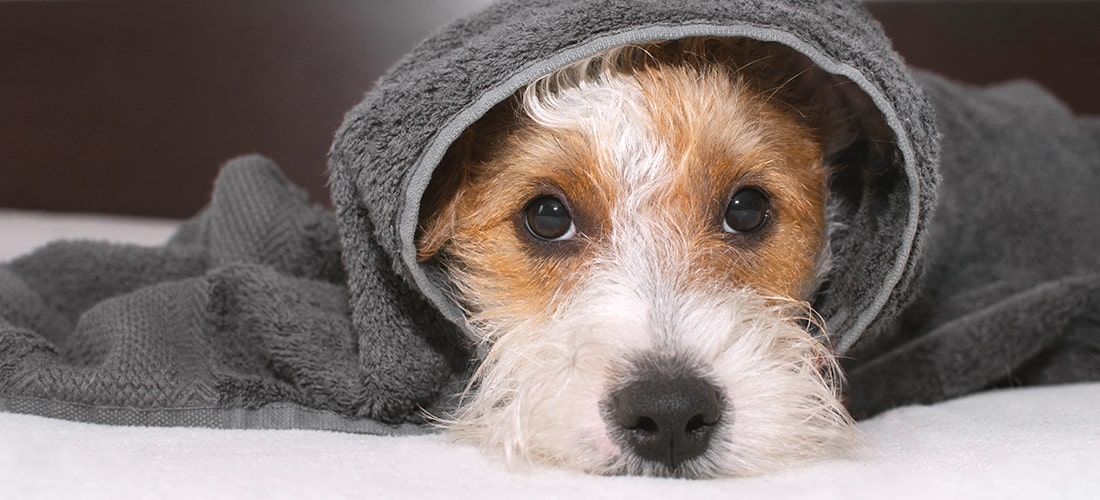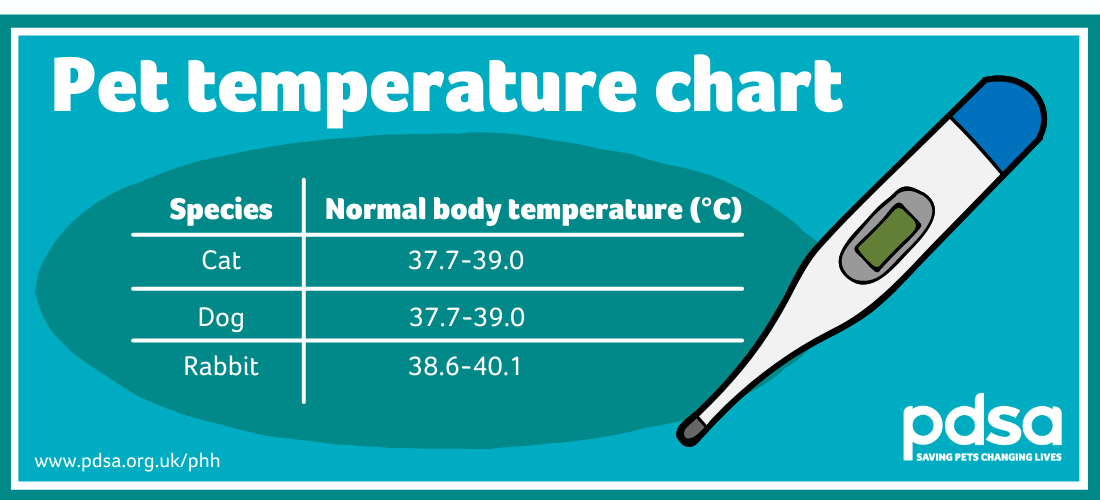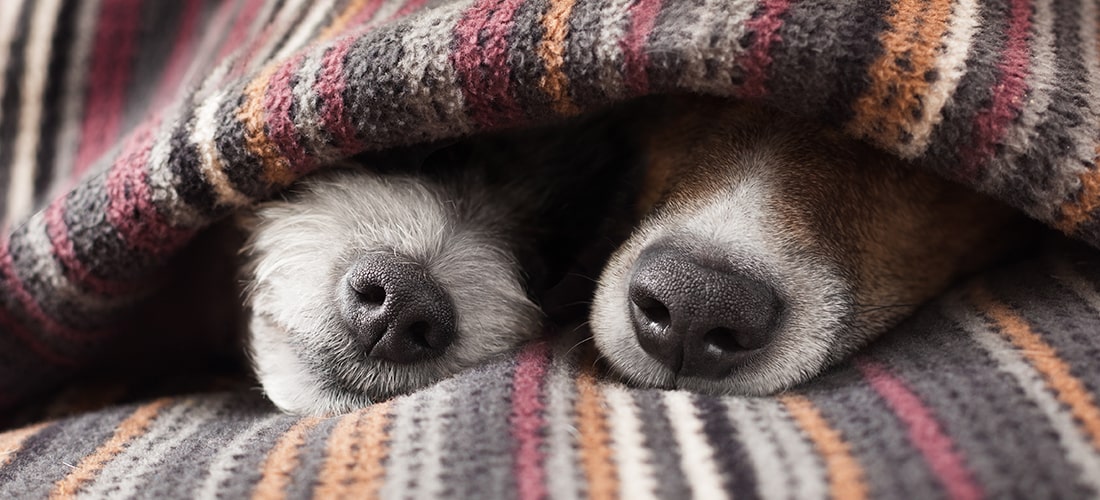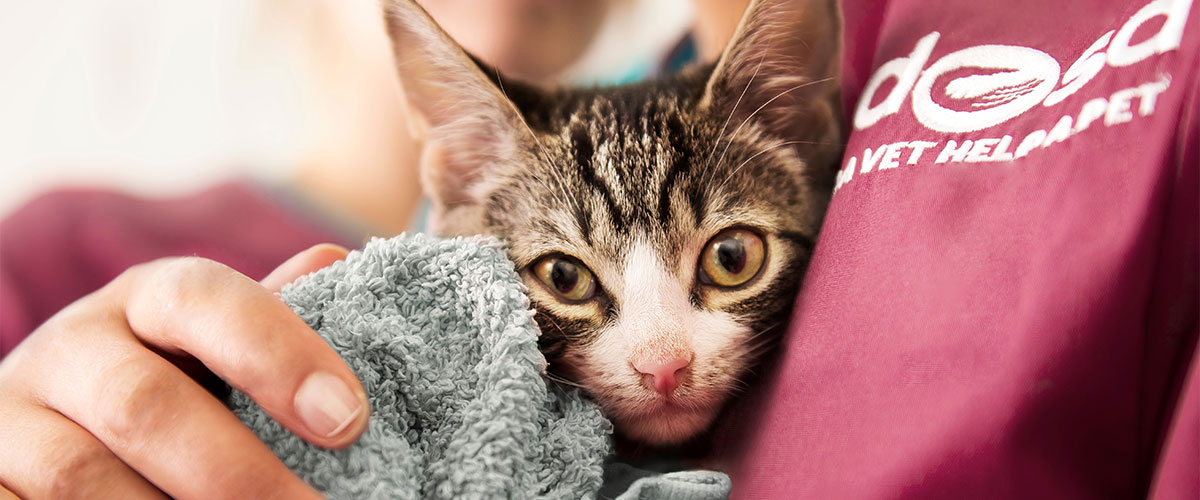Hypothermia in Pets
Overview
- Hypothermia is when an animal’s body temperature drops dangerously low.
- Hypothermia can be caused by being out in the cold, blood loss, certain illnesses, and occasionally during a sedation/anaesthetic.
- Hypothermia is extremely dangerous and if it isn’t treated quickly, can cause the whole body to shut down, which can cause death.
- We’ve put together this article to help you recognise, understand and prevent hypothermia in your pets.

Hypothermia is when a pet’s body temperature drops dangerously low (see chart below). Most pets can cope with a small drop in body temperature, but a large, or sudden drop can cause:
- A slow, irregular heart beat
- Kidney damage
- Gut damage
- Damage to blood vessels
- Damage to the heart
- Electrolyte imbalances
- Blood clots
- Reduced ability to fight infection

What causes hypothermia?
There are several different things that can cause hypothermia, such as:
Cold environments – There is a limit to the warmth your pet’s fur can provide. If they are exposed to the cold and don’t have anywhere to warm up, they will be at risk of developing hypothermia. Young, old, frail, small and newborn pets are particularly at risk so it’s important to take extra steps to keep them warm.
Getting wet – As long as your pet dries off after getting wet, they are unlikely to get cold. However, if they stay wet and get cold, they are at risk of developing hypothermia, especially on a cold day, if the water was very cold, or if they stop moving around.
Anaesthetic/sedation – Many of the drugs used for sedation and anaesthesia cause a drop in body temperature, and because your pet can’t do anything to increase their body temperature while they are asleep (such as shiver or move) – they are at risk of hypothermia unless they are kept warm and cosy. The risk is even higher if your pet requires a long surgery, loses a lot of blood during surgery, or needs a large amount of fluid throughout.
Illness – There are many different conditions and illnesses that can cause body temperature to drop, including sepsis (infection in the blood), pyometra (infected womb), severe hypothyroidism, severe Addison’s disease, severe allergic reactions/anaphylaxis, poisonings/toxin ingestion, and late stage heart failure.
Blood loss – Blood flowing around your pet’s body keeps them warm, so if your pet loses a lot of blood they are likely to get very cold.
Symptoms
Symptoms of hypothermia include:
- Shivering – shivering is a natural response to help the body warm up. However, once your pet becomes severely cold, they might stop shivering completely.
- Drowsiness, confusion and clumsiness
- Pale gums
- Loss of consciousness/collapse and coma
First aid and treatment
If you think your pet is suffering from hypothermia it’s important to administer first aid and call your vet immediately. Acting quickly could save their life.
First Aid
- Dry them off with a towel if they are wet.
- Warm them up with blankets underneath and over them.
- If your pet is awake and able to drink, try giving them some lukewarm (not hot) water.
- Slowly increase the temperature around them i.e. put the heating on in your house/car – but be careful not to warm them up too quickly or burn them with anything hot such as a hot water bottle.
- Take them to the vet to be properly checked over – even if you think they’re okay.

Although not all causes of hypothermia can be prevented, there are a few simple things that you can do to help stop your pets getting dangerously cold through the winter months:
Dogs & Cats
- Make sure they have a warm, comfy bed in a draught free area of the house.
- Never leave them locked outside – make sure they can always come inside to warm up if they want to.
- If your cat prefers to spend time outside, make sure you provide them with a warm, dry, cosy shelter that contains plenty of bedding.
- Dry them off if they get wet and cold – it’s a good idea to carry a towel on dog walks.
- Never leave them anywhere cold (such as your car) after a walk.
- Some dogs are happier wearing a dog coat in cold weather – greyhounds, lurchers, and whippets are a breed type that particularly enjoy an extra layer of warmth!
Rabbits, guinea pigs, and other small pets
- Move small pets such as rabbits and guinea pigs indoors, or into a car-free garage/shed during the colder months.
- Make sure they always have plenty of bedding, and keep them insulated by covering their home with old blankets (whilst making sure fresh air can still get in to keep it well ventilated).
High risk pets
Pets that are very young, small, elderly, skinny, or poorly are at high risk of hypothermia because they can’t control their body temperature as well. If you own a high risk pet, you will need to take extra care to keep them warm.
- Provide them with some extra bedding and consider getting them a heat mat for their bed.
- Newborn animals should be kept in a warm room, with no draught and often benefit from a heat lamp (placed at a safe distance).
- Young, small and old pets need close supervision in cold environments.
Cold cars
On a cold day, the inside of your car is likely to be the same temperature as outside. Even if you’ve been driving with the heating on, once it’s switched off, the temperature will drop very quickly. Don’t leave your dog in your car in the colder months, drop them off at home instead, where they can stay warm and safe.
Published: Dec 2021
Did you find this page useful?
Tell us more
Please note, our vets and nurses are unable to respond to questions via this form. If you are concerned about your pet’s health, please contact your vet directly.
Thank you for your feedback
Want to hear more about PDSA and get pet care tips from our vet experts?
Sign up to our e-newsletter
Written by vets and vet nurses. This advice is for UK pets only. Illustrations by Samantha Elmhurst.

